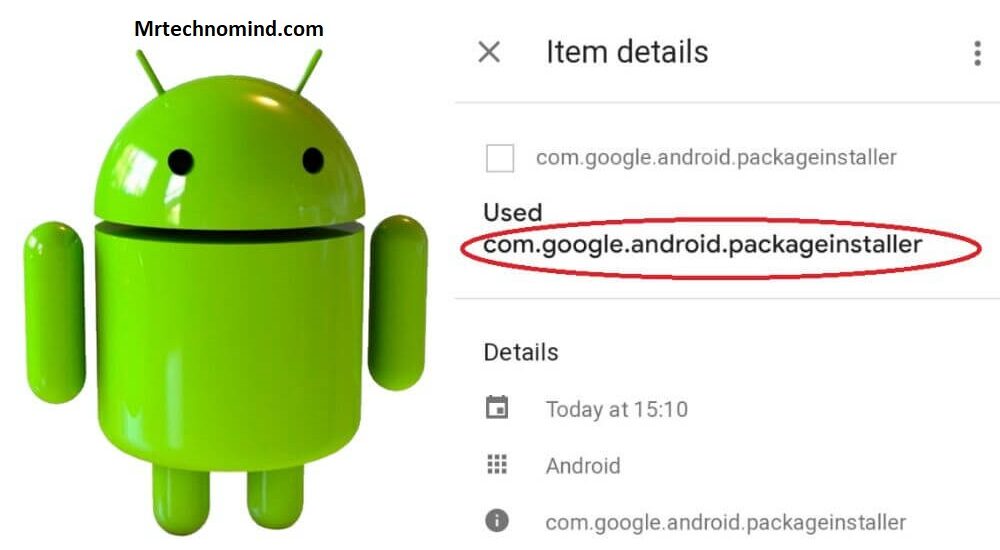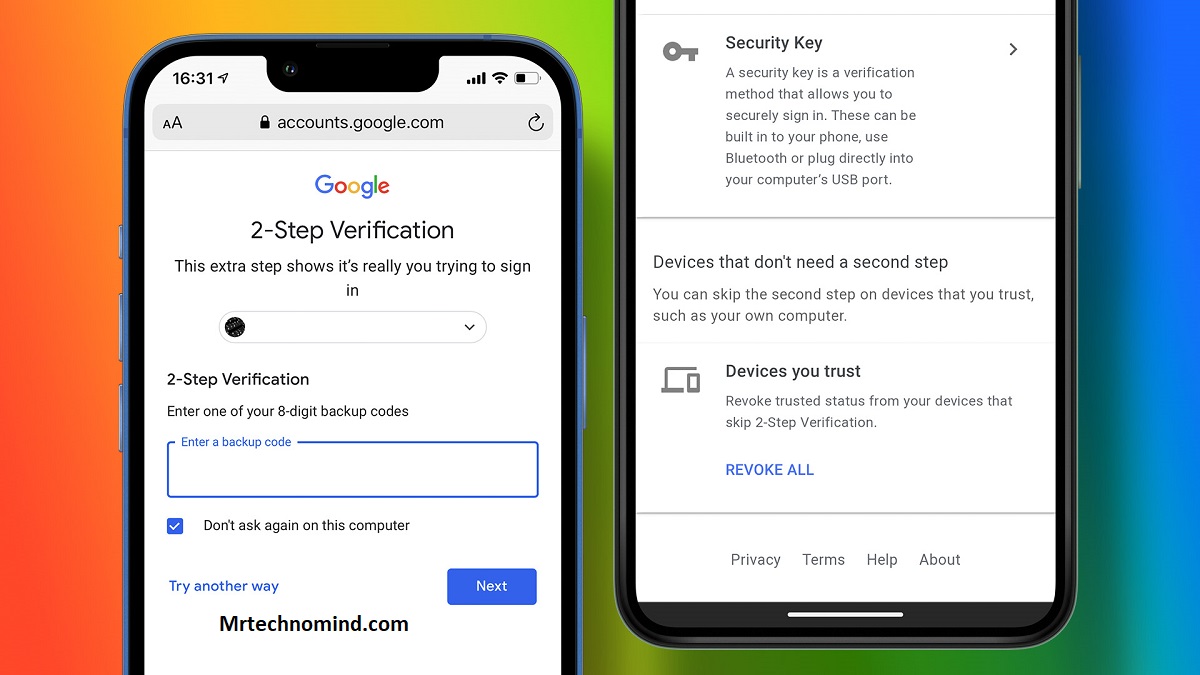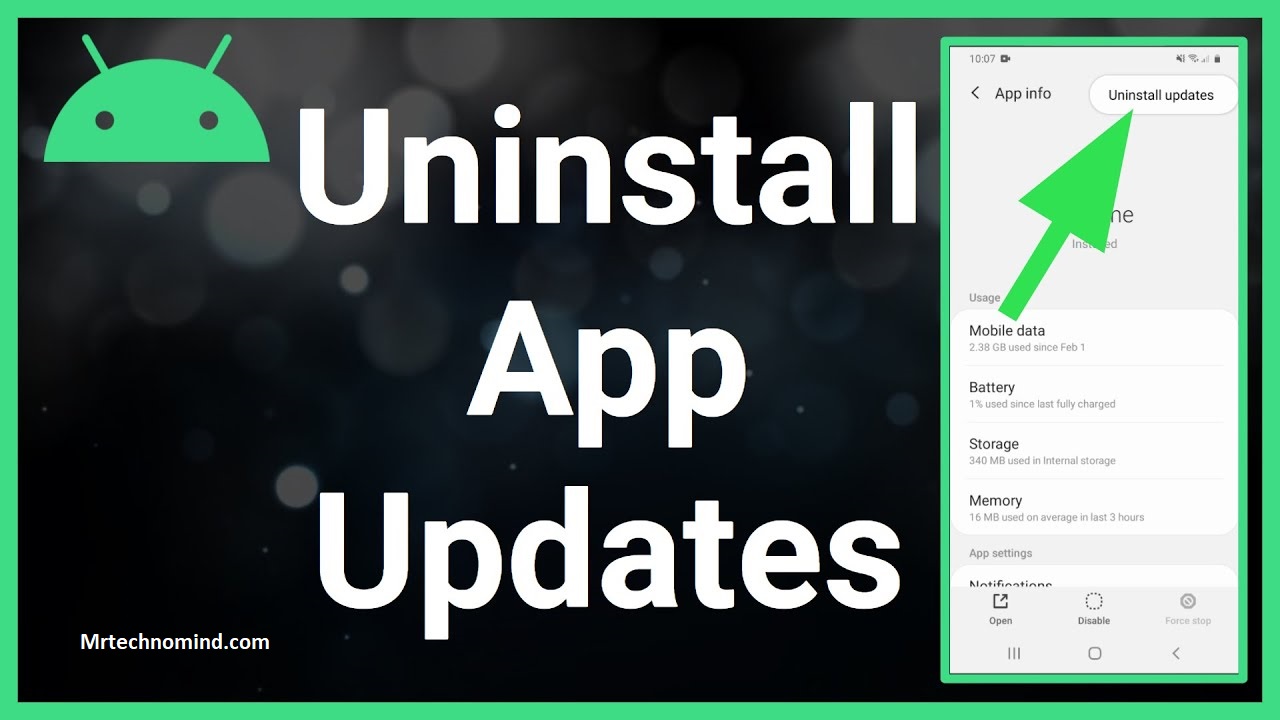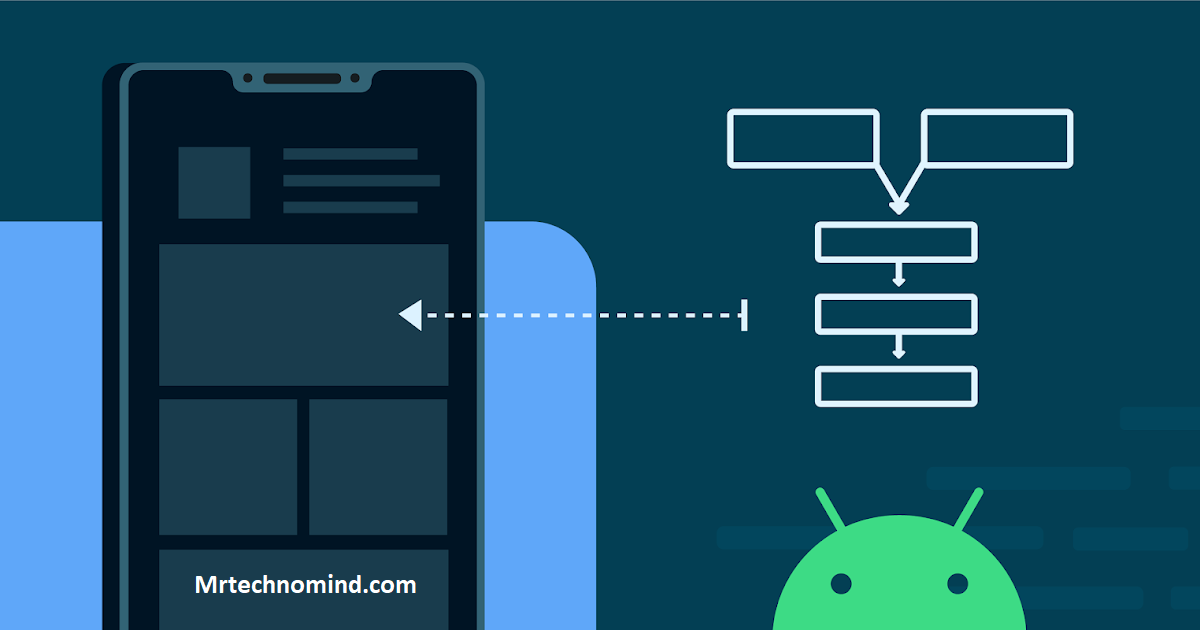Are you curious about how Android packages are installed on your device? Look no further than the com.google.android.packageinstaller package, which plays a crucial role in the installation process. In this article, we will delve into the inner workings of this package and explore its various functions and features.
Firstly, let’s understand what the com.google.android.packageinstaller package is all about. This package is a front-end interface for users to install, update, and uninstall apps on their Android devices. It provides a seamless experience by guiding users through installation and ensuring that apps are verified before installation. By exploring this package in detail, you will gain insights into how apps are managed on your device.
In addition to its primary function of app installation, the com.google.android.packageinstaller package also offers advanced features for developers. If you’re an app developer looking to enhance your app’s installation process or customize certain aspects, this article will provide valuable tips and techniques to help you achieve your goals. Furthermore, we will discuss security considerations related to app installations and share best practices to ensure a safe and secure environment for users and developers. So let’s dive in and uncover everything there is to know about the com.google.android.packageinstaller package!
Overview of Android Package Installation

You might be wondering how Android Package Installation works. The com.google.android.packageinstaller is a system app that comes pre-installed on all Android devices. It is responsible for managing the installation of new apps on your device. When you download an app from the Google Play Store or any other source, the APK file is downloaded to your device. The com.google.android.packageinstaller then takes over and handles the installation process.
One of the key features of com.google.android.packageinstaller is its ability to verify and authenticate apps before installing them. This ensures that only trusted and safe apps are installed on your device, protecting you from potential malware or security threats. Additionally, it provides a user-friendly interface that guides you through the entire installation process, making it easy even for novice users.
There are several benefits of using com.google.android.packageinstaller for Android package installation. Firstly, it provides a streamlined and standardized approach to installing apps across different devices running on the Android operating system. This ensures consistency in performance and compatibility with various hardware configurations. Secondly, it allows users to easily manage their installed apps by providing options to update, uninstall, or disable them when needed. Lastly, com.google.android.packageinstaller enhances overall security by scanning apps for potential risks before installation.
Understanding how com.google.android.packageinstaller functions is essential for every Android user. By knowing its features and benefits, you can ensure a smooth and secure app installation experience without worrying about malicious software or compatibility issues with your hardware configuration.
Understanding the com.google.android.packageinstaller Package

Unravel the mysteries of the com.google.android.packageinstaller package and experience a rush of curiosity. This package is crucial in the Android ecosystem, specifically in app installations. By understanding its inner workings, you can understand how app permissions and signing are handled on your device.
To better understand, here are some key aspects related to the com.google.android.packageinstaller package:
- App Permissions: The com.google.android.packageinstaller package is responsible for managing app permissions during installation. It prompts users with a list of permissions that an app requires before proceeding with the installation process. This allows users to control which permissions they grant to each application, ensuring their privacy and security.
- App Signing: Another important function of com.google.android.packageinstaller is handling app signing. When an app is signed by its developer, it generates a unique digital signature that verifies its authenticity. During installation, this package checks if the signature matches the one stored on your device. If there is a mismatch or no signature at all, it raises red flags about potential tampering or malicious behavior.
- User Control: The com.google.android.packageinstaller empowers users by providing clear information about an app’s requested permissions and digital signature. This enables informed decision-making when installing apps from unknown sources or requiring sensitive access rights. This vital information lets users confidently decide whether to proceed with installation.
We are understanding how the com.google.android.packageinstaller works sheds light on essential aspects of Android app installations such as permission management and verification through signatures. In the next section about ‘installation process and verification,’ we will dive deeper into how this package ensures secure installations without compromising user control or device integrity.
Installation Process and Verification

Delve into the complexities of the installation process and verification, gaining insight into how this crucial step ensures secure installations without compromising user control or device integrity. Installing an app on your Android device requires a multi-step process to ensure a safe and reliable installation. First, the package installer checks for potential compatibility issues between the app and your device’s operating system. If everything is compatible, the installer verifies the app’s digital signature to ensure its authenticity and integrity.
During installation, troubleshooting may occur if there are conflicts with existing apps or insufficient storage space. The package installer analyzes these potential issues and provides detailed error messages to help you resolve them. This troubleshooting feature allows you to address any problems during installation, ensuring that only stable and functional apps are installed on your device.
Additionally, app permission management is another important aspect of the installation process. Before an app can be installed, you are prompted to review and grant permissions requested by the app. This step ensures you have complete control over what information an app can access on your device. By carefully managing these permissions, you can protect your privacy and prevent unauthorized access to sensitive data.
With a solid understanding of how installations are processed and verified on Android devices, it becomes clear why this step is crucial for maintaining security and user control. Now let’s explore another essential aspect of managing apps – updating and uninstalling them – which allows you to keep your device up-to-date with improved features while effortlessly removing unwanted applications from your system.
Updating and Uninstalling Apps

When managing app data, it is important to understand how to update and uninstall apps effectively. This ensures that your device stays organized and free from unnecessary clutter. Additionally, ensuring app compatibility is crucial to maintain smooth functionality and avoid potential issues with your device’s performance.
Managing App Data
To effectively manage app data, you can easily back up and restore your important information. App backup allows you to save a copy of your app’s data, settings, and preferences in case you need to reset your device or switch to a new one. By regularly backing up your apps, you can ensure that you don’t lose any valuable data. Data synchronization is another useful feature that helps keep your app data consistent across multiple devices. With data synchronization enabled, any changes made on one device will automatically be updated on all other devices connected to the same account. This makes it convenient for users who use multiple devices and want their app data seamlessly synchronized.
In addition to these features, managing app data involves organizing and deleting unnecessary files. Some apps may generate cache or temporary files that take up storage space over time. By clearing these files regularly, you can free up storage space on your device and improve its performance. Furthermore, managing app data includes uninstalling unused or no longer needed apps. Removing unnecessary apps frees up storage space and reduces clutter on your device’s interface.
By effectively managing app data through backups, synchronization, organization, and deletion of unnecessary files and apps, you can ensure a smooth user experience while using various applications on your device. In the next section about ensuring app compatibility, we will explore how to optimize the performance of different apps by addressing compatibility issues between the operating system and the installed applications without compromising functionality or security measures.
Ensuring App Compatibility
Now that you have learned about managing app data let’s move on to ensuring app compatibility. This is essential to app development, ensuring your app can run smoothly on different devices and operating systems. App compatibility refers to the ability of an app to function correctly and provide a consistent user experience across various platforms.
To ensure app compatibility, developers must consider device specifications, screen sizes, and operating system versions. They must thoroughly test their apps on different devices and simulate various scenarios to identify potential issues or bugs. Additionally, developers should stay updated with the latest advancements in technology and adapt their apps accordingly to remain compatible with new features and changes in operating systems.
Developers often use various tools and techniques to create an effective plan for ensuring app compatibility. One common approach is conducting compatibility testing using emulators or real devices representing different hardware configurations and system versions. Another technique is utilizing cross-platform development frameworks that allow building apps running on multiple platforms without compromising performance or user experience.
By ensuring app compatibility throughout the development process, you can reach a wider audience and provide a seamless experience for your users regardless of their device. Now let’s explore some advanced features and functions that can further enhance your app’s capabilities.
| Device Specifications | Screen Sizes | Operating System Versions |
|---|---|---|
| CPU | Small | Android 4.X |
| RAM | Medium | Android 5.X |
| Storage Capacity | Large | Android 6.X |
These are just some examples of factors that developers need to consider when ensuring app compatibility. By addressing these aspects diligently, you can create an app that works well across different devices and operating systems while providing a seamless user experience.
Moving forward into our discussion about advanced features and functions…
Advanced Features and Functions

One can explore the advanced features and functions of com.google.android.packageinstaller to unlock a world of possibilities. This powerful tool offers a wide range of customization options that allow you to tailor your app installation experience according to your preferences. From changing the default installation location to setting up automatic updates, these advanced features make it easier for users to personalize their app usage.
Here are four key aspects of com.google.android.package installers advanced features:
- Customization Options: With this package installer, you can customize various aspects of app installations. You can choose where apps are installed by default – either on internal storage or an SD card. Additionally, you can specify whether you want apps to be automatically updated or require manual approval before updating.
- User Permissions: The package installer also provides detailed information about the permissions requested by each app during installation. It allows you to review and grant or deny specific permissions based on your preferences and privacy concerns. This feature ensures that you have full control over what data an app has access to.
- App Compatibility Checks: Another useful function offered by com.google.android.packageinstaller is its ability to check for app compatibility with your device before installing it. This ensures you only install apps compatible with your hardware and software specifications, minimizing potential issues or conflicts.
- Security Enhancements: The package installer includes security measures to protect users from potentially harmful applications. It scans all installed apps for malware regularly and alerts users if suspicious behavior is detected.
By leveraging these advanced features and functions, users can enjoy a personalized and secure app installation experience tailored to their needs and preferences. Now let’s move on to troubleshooting common issues encountered using com. google.android—package installer without skipping a beat in exploring this versatile tool.
Troubleshooting Common Issues
If you encounter any common issues while using com.google.android.package installer, troubleshooting them can help ensure a seamless and efficient app installation experience tailored to your needs and preferences. One of the most frustrating problems you may encounter is app crashes during installation. This could be due to various reasons such as incompatible hardware or software, insufficient storage space, or conflicting apps. To troubleshoot this issue, try restarting your device, clearing cache and data for the package installer app, or uninstalling any recently installed apps that may be causing conflicts.
Another common issue is encountering installation errors. These errors can occur due to several factors such as network connectivity issues, corrupted APK files, or insufficient permissions. To resolve these errors, make sure you have a stable internet connection and retry installing the app. If the error persists, try downloading the APK file from a different source or clearing the cache and data for both Google Play Store and package installer app in your device settings.
Troubleshooting app crashes and resolving installation errors are crucial steps to ensure a smooth experience with com.google.android. package installer. By following these steps and proactively identifying potential issues, you can overcome common obstacles that may hinder your app installation process. Now let’s delve into security considerations when using this package installer functionality without compromising your device’s safety.
(Note: The subsequent section will discuss ‘security considerations’ when using com.google.android.packageinstaller.)
Security Considerations
To ensure a safe app installation experience, it’s important to consider security aspects when using the package installer functionality. One crucial aspect to consider is data encryption. When installing apps through the package installer, sensitive information such as personal data and passwords may be at risk if not properly protected. Therefore, it is essential to use encryption methods to safeguard this data during the installation process. Encrypting the data can significantly reduce the chances of unauthorized access or interception.
Another important security consideration for secure app installation is verifying the app’s source before installation. The package installer allows users to install apps from various sources, including third-party websites and app stores. However, not all sources may be trustworthy or reliable. To minimize potential risks, always verify that the app’s source is reputable and reliable before installing. This can help prevent downloading malicious or compromised apps that could compromise your device’s security.
In addition to data encryption and source verification, implementing best practices can enhance security during app installations using the package installer functionality. These include keeping your device’s operating system up-to-date to benefit from any security patches and enhancements manufacturers provide. It’s also advisable to review user reviews and ratings before installing an app to get insights into its performance and potential security issues reported by other users. These tips will help ensure a secure app installation experience while minimizing potential risks.
By considering these important security aspects, such as data encryption, verifying sources, and following best practices for secure installations through the package installer functionality, you can enjoy a safe experience while exploring new apps on your Android device without compromising your privacy or exposing yourself to potential threats from malicious software.
Tips and Best Practices

This discussion will cover some key points regarding app source verification, regular updates, and maintenance. You need to verify the source of the apps you download to ensure their authenticity and security. Regular updates are crucial as they often include bug fixes and security patches that protect your device from vulnerabilities. Additionally, maintaining your apps by updating them regularly ensures access to the latest features and improvements, enhancing your overall user experience.
App Source Verification
App Source Verification is an essential step in ensuring the security of downloaded applications. When you download an app from a source other than the official app store, there is a risk that it may contain malware or other malicious code. App Source Verification helps to mitigate this risk by verifying that the app comes from a trusted source and has not been tampered with. This verification process typically involves checking the app’s cryptographic signature against known trusted signatures.
To give you a better understanding, here is a table highlighting the importance of App Source Verification:
| Benefits | Risks | |
|---|---|---|
| Pros | – Ensures app security | – Reduces risk of malware infections |
| – Protects against tampered apps | – Prevents unauthorized access to data | |
| Cons | – May limit access to certain features | – Can be time-consuming for developers |
By verifying the source of your downloaded apps, you can ensure they are safe to use and protect your device and personal data from potential threats. Now, let’s discuss regular updates and maintenance without neglecting the importance of app security and permission management in maintaining a secure environment for your device.
Regular Updates and Maintenance
Ensure you regularly update and maintain your device to keep it running smoothly and protect it from potential vulnerabilities. Regular maintenance involves installing software updates, often bug fixes, security patches, and performance optimization. These updates are essential for ensuring that your device operates efficiently and securely. Regularly updating your device can take advantage of new features, improve system stability, and protect against the latest threats.
In addition to software updates, performing regular maintenance tasks such as clearing cache files, deleting unnecessary apps or files, and optimizing storage can help improve the overall performance of your device. These actions free up valuable space on your device’s storage drive and allow it to run more efficiently. It is also advisable to periodically check for any suspicious or unwanted applications that may have been installed without your consent.
Regularly updating and maintaining your device can ensure its optimal performance while protecting it from potential vulnerabilities. Now let’s explore advanced techniques for developers to enhance their app source verification process without compromising user experience or security.
Advanced Techniques for Developers

Utilize advanced techniques to enhance your development skills for the com.google.android. package installer. One important aspect of app development is managing app permissions. With the com.google.android.packageinstaller, you can control which permissions your app requests from users. By carefully managing these permissions, you can ensure that your app only asks for what it truly needs, improving user trust and decreasing potential privacy concerns. Optimizing app performance is crucial for providing a smooth and seamless user experience. The com.google.android.packageinstaller offers various tools and techniques to help you identify and resolve performance issues, such as memory leaks or slow loading times.
To effectively manage app permissions with the com.google.android.packageinstaller, start by thoroughly reviewing the permissions your app currently requests. Remove unnecessary or unused permissions to minimize potential security risks and improve user confidence in your app’s integrity. It is also essential to explain clearly to users why certain permissions are necessary for your app’s functionality. This transparency helps build trust and encourages users to grant the requested permissions.
When optimizing app performance, take advantage of the debugging features offered by the com.google.android.packageinstaller. Use profiling tools like Android Profiler or Memory Monitor to identify areas where your app may be consuming excessive resources or experiencing bottlenecks. Analyze CPU usage, memory allocation patterns, and network calls to pinpoint areas that require optimization. Addressing these performance issues ensures users have a smooth and efficient experience while using your application.
Leveraging advanced techniques with the com.google.android.packageinstaller allows developers to manage app permissions and optimize overall performance efficiently. By carefully selecting necessary permissions and providing clear explanations to users, you can enhance trust in your application’s security measures. Furthermore, utilizing debugging tools provided by the package installer enables developers to analyze resource consumption and effectively address performance bottlenecks. These practices contribute towards creating high-quality apps that deliver exceptional user experiences.
Moving forward, let’s explore some valuable resources and further reading materials that can assist you in deepening your understanding of the com.google.android.packageinstaller and expanding your development skills.
Resources and Further Reading

Now that you’ve learned some advanced techniques for developers, it’s time to explore the resources and further reading available to help you enhance your skills even more. The Android PackageInstaller is a powerful tool with endless possibilities, and numerous sources can provide valuable insights and guidance. Whether you’re looking for official documentation, tutorials, or community forums, these resources will be invaluable in expanding your knowledge.
To make it easier for you to navigate through the vast sea of information, here’s a helpful table summarizing some of the top resources and further reading materials available:
| Resource Name | Description |
|---|---|
| Android Developers | Official documentation from Google on all things Android |
| Stack Overflow | Community-driven Q&A platform where developers share insights |
| GitHub Repositories | Explore open-source projects related to package installation |
| Medium Blogs | Articles written by experienced developers sharing their tips |
The Android Developers website should be your first stop for comprehensive and up-to-date information about the Android PackageInstaller. It includes detailed guides, API references, sample code, and best practices straight from the source. If you encounter any specific issues or have questions, Stack Overflow is an excellent resource where fellow developers provide answers based on their experiences.
For those interested in diving deeper into the codebase of package installers or seeking inspiration from other developers’ work, GitHub repositories offer a treasure trove of open-source projects related to package installation. Finally, Medium blogs are a great way to stay updated with the latest trends and techniques in Android development. Many experienced developers share their insights through articles that can give you fresh perspectives on approaching different aspects of package installation.
By exploring these resources and further reading materials, you’ll gain access to a wealth of knowledge that will help you take your skills as an Android developer to new heights. Remember always to stay curious and keep learning, as the world of technology is continuously evolving. Happy coding!
Frequently Asked Questions
1. Can I Install Android Apps From Sources Other Than the Google Play Store Using the Com.google.android.packageinstaller Package?
You can install Android apps from sources other than the Google Play Store. By using the com.google.android.packageinstaller package, you can access the installation process for apps obtained from third-party sources or alternative app stores. This package allows you to bypass the restrictions imposed by Google Play Store. It allows you to explore a wider range of apps available outside the official store. Installing apps from third-party sources can be beneficial if you want to try out different applications that may not be available on the Play Store or prefer using alternative app stores with unique features and options. However, exercising caution when downloading apps from unknown sources is important to avoid any potential security risks.
2. How Can I Manually Verify the Authenticity and Integrity of an App Installed Using the Com.google.android.packageinstaller?
To verify the authenticity and integrity of an app installed using the com.google.android.packageinstaller, you can follow a few steps. Firstly, check if the app is from a trusted source. Installing apps from reputable sources reduces the risk of malware or tampered apps. Secondly, review user ratings and reviews to see if other users have had any issues with the app. This can give you an idea about its reliability. Additionally, compare the app’s permissions with its intended functionality. It might be suspicious if it asks for unnecessary permissions unrelated to its purpose. Lastly, consider using antivirus software to scan the app before installing for potential threats. By taking these precautions, you can enhance your confidence in the authenticity and integrity of an app installed through com.google.android.packageinstaller and reduce common app installation errors.
3. Are There Any Limitations or Restrictions When Updating or Uninstalling Apps Using the Com.google.android.packageinstaller?
When updating or uninstalling apps using the com.google.android.packageinstaller, there are some limitations and precautions to consider. First, it is important to note that certain system apps cannot be uninstalled or updated using this package installer. These apps are typically integral to the functioning of your device and removing them may cause instability or other issues. Additionally, when updating an app, it is essential to ensure that you are downloading the update from a trusted source. This is because malicious actors can create fake updates that contain malware or other harmful elements. Therefore, it is crucial to exercise caution and only update or uninstall apps from reliable sources. By being aware of these limitations and taking necessary precautions, you can effectively manage your installed apps using the com.google.android—packageinstaller without compromising the authenticity and integrity of your device’s software ecosystem.
4. What Are Some Advanced Features and Functions That Can Be Accessed Through the Com.google.android.packageinstaller Package?
Some advanced features and functions can be accessed through the com.google.android.packageinstaller package include the ability to install Android apps from sources other than the Google Play Store, manual verification of app authenticity and integrity, and security measures to ensure the safety of app updates and uninstalls. While this package provides users with more flexibility in terms of app installation, it also comes with certain limitations and restrictions. Users should consider that installing apps from unknown sources may pose a security risk, as these apps have not undergone the same level of scrutiny as those on the official Play Store. Additionally, updating or uninstalling apps using this package may require manual intervention and careful consideration to avoid potential issues or conflicts.
5. Are There Any Recommended Security Measures or Considerations to Keep in Mind When Using the Com.google.android.packageinstaller Package?
When using the com.google.android.packageinstaller package, there are several recommended security measures and considerations to remember. First, it is important to only download and install Android apps from trusted sources such as the Google Play Store. This ensures the authenticity and integrity of the apps you are installing. Additionally, it is crucial to regularly update your apps as updates often include security patches that protect against vulnerabilities. If you encounter any suspicious or potentially harmful apps, promptly uninstall them to mitigate potential risks. While the com.google.android.packageinstaller package provides advanced features and functions for managing app installations, it also has limitations and restrictions in place to maintain security standards on your device. By following these security measures and considerations, you can enhance the overall safety of your Android device when using com.google.android. package installer.
Conclusion
In conclusion, the article “https://grouphowto.com/com-google-android-packageinstaller/”provides a comprehensive overview of Android Package Installation. It delves into the com.google.android—packageinstaller package, detailing its functionality and purpose within the Android operating system. The article offers a step-by-step explanation of the installation process, including verification and security considerations.
Furthermore, it discusses updating and uninstalling apps using the package installer. The article also explores advanced features and functions that can be utilized by developers for more efficient app management. Security considerations are emphasized throughout the article, highlighting best practices and providing tips to ensure a secure installation process.
Overall, this resource is an informative guide for both users and developers. It provides valuable insights into Android Package Installation and offers practical advice for optimizing app installations on Android devices. With its objective approach and analytical analysis, this article is a valuable resource for anyone seeking a deeper understanding of com.google.android—packageinstaller package functionalities.